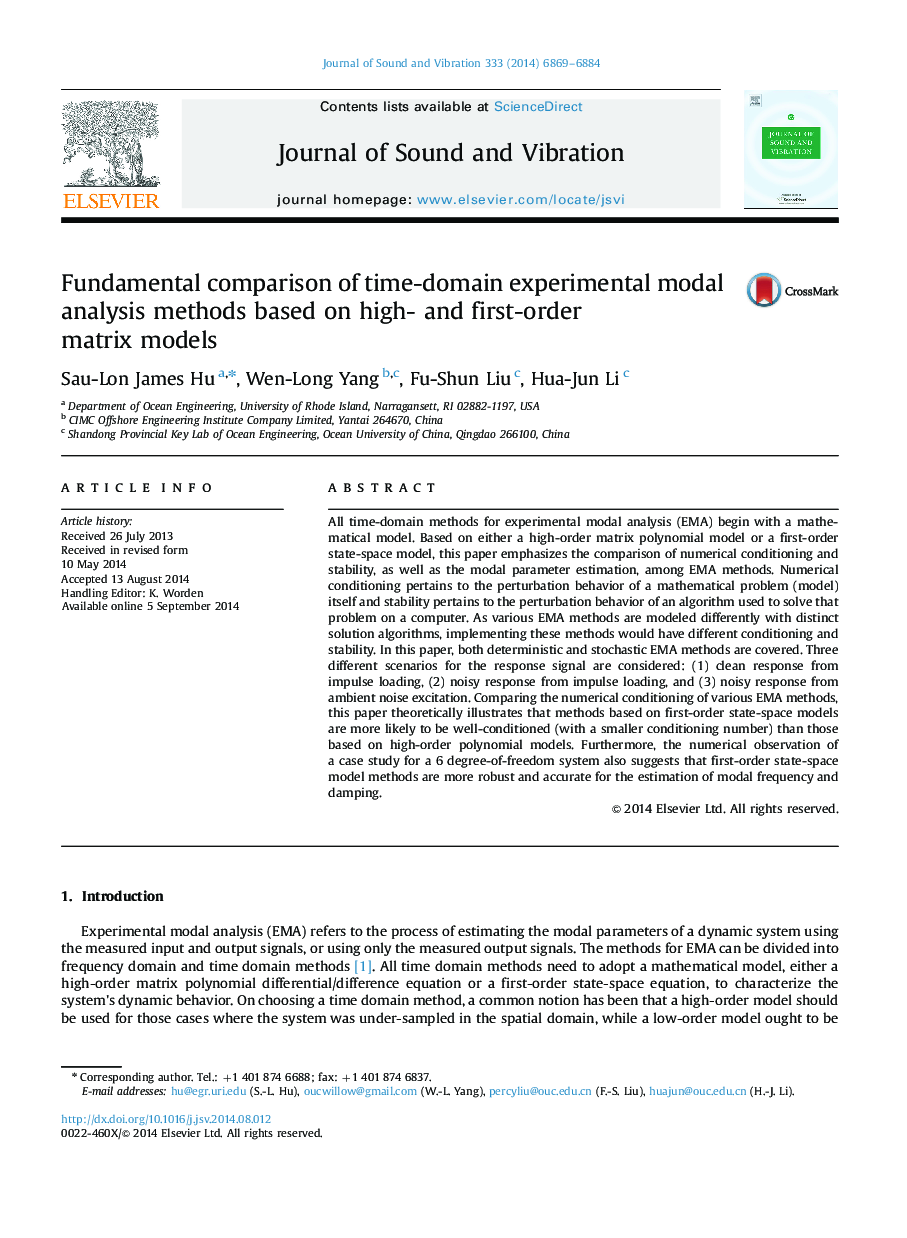| کد مقاله | کد نشریه | سال انتشار | مقاله انگلیسی | نسخه تمام متن |
|---|---|---|---|---|
| 287426 | 509565 | 2014 | 16 صفحه PDF | دانلود رایگان |
All time-domain methods for experimental modal analysis (EMA) begin with a mathematical model. Based on either a high-order matrix polynomial model or a first-order state-space model, this paper emphasizes the comparison of numerical conditioning and stability, as well as the modal parameter estimation, among EMA methods. Numerical conditioning pertains to the perturbation behavior of a mathematical problem (model) itself and stability pertains to the perturbation behavior of an algorithm used to solve that problem on a computer. As various EMA methods are modeled differently with distinct solution algorithms, implementing these methods would have different conditioning and stability. In this paper, both deterministic and stochastic EMA methods are covered. Three different scenarios for the response signal are considered: (1) clean response from impulse loading, (2) noisy response from impulse loading, and (3) noisy response from ambient noise excitation. Comparing the numerical conditioning of various EMA methods, this paper theoretically illustrates that methods based on first-order state-space models are more likely to be well-conditioned (with a smaller conditioning number) than those based on high-order polynomial models. Furthermore, the numerical observation of a case study for a 6 degree-of-freedom system also suggests that first-order state-space model methods are more robust and accurate for the estimation of modal frequency and damping.
Journal: Journal of Sound and Vibration - Volume 333, Issue 25, 10 December 2014, Pages 6869–6884
